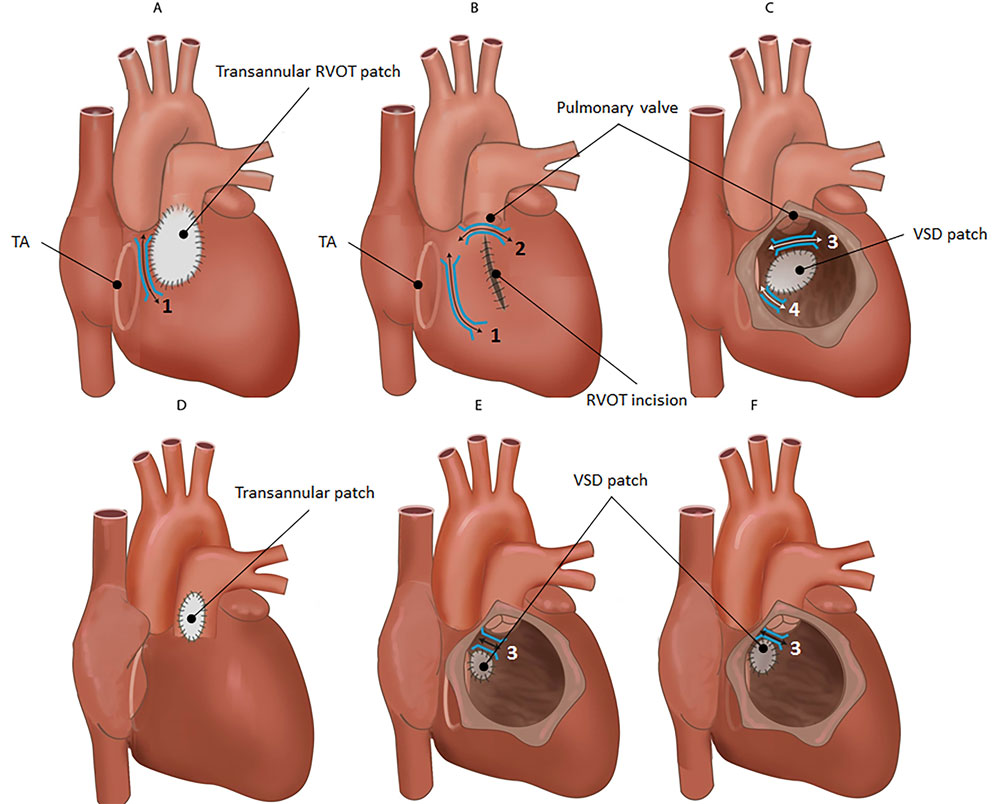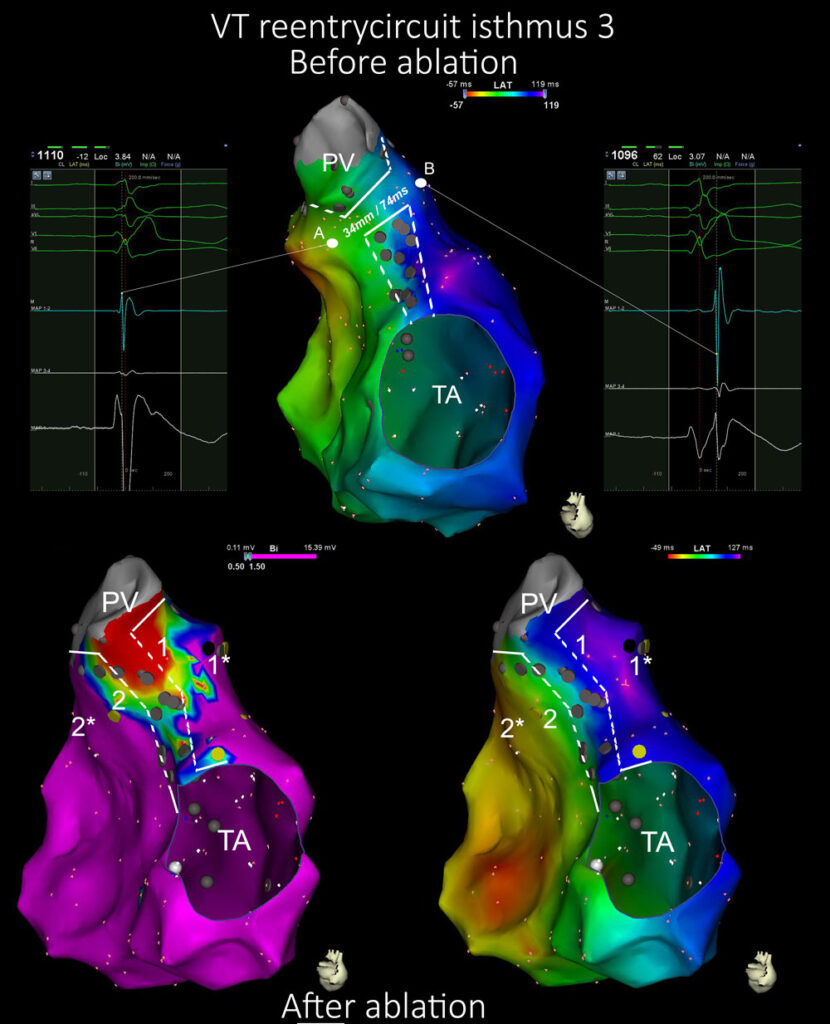
Projects
Mapping studies
Advances in surgical techniques have improved life expectancy in patients with CHD, exposing more patients to the risk of late ventricular tachycardia and sudden death. The VT substrate can be identified by detailed 3D electroanatomical mapping and RFCA targeting the VT substrate is the most promising therapy to prevent VT.

Surgical studies
In tetralogy of Fallot patients with a slow-conducting anatomical isthmus who undergo pulmonary valve replacement, intraoperative cryoablation of anatomical isthmuses should be performed. Furthermore, confirmation of bidirectional conduction block across the cryoablation line by intraoperative differential pacing may improve the VT-free survival.
Non-invasive risk stratification
Our aim is to non-invasively predict the VT substrate in patients with tetralogy of Fallot and other congenital heart disease. We systematically perform diagnostic tests in the outpatient clinic to screen patients for high-risk criteria. Patients considered high risk or before re-valving are offered an electrophysiological study, providing electroanatomical validation.